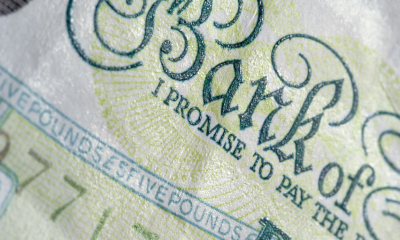
PAYE (Pay As You Earn) is the system used by employers to collect tax and National Insurance contributions on employees' pay and pay these to HMRC. Under RTI (Real Time Information) rules, employers must inform HMRC online each time they make a payment through payroll
Detailed PAYE tax calculations and processes can be complex, but payroll services or software can make things much easier for you.
What is PAYE?
'PAYE' stands for Pay As You Earn. It is the system used to deduct tax and employee National Insurance contributions (NI) from employee wages and pay this to HMRC. The employee's deductions, together with the employer's National Insurance contributions, are then paid over to HM Revenue & Customs (HMRC).
You are legally obliged to operate PAYE for any employee with an income above the lower earnings limit (£125 per week 2025/26 and £123 per week 2024/25). If you fail to do so, you become liable for the tax – not your employee(s). Some disreputable business owners try to argue that they do not have employees and that those who work for them are self-employed, but HMRC will always challenge this. If you employ people, you must set up a PAYE scheme for your business.
The amount payable will depend on what the employee earns and their personal allowances.
Company directors, high earners and employees with complex tax affairs will also need to complete their own self assessment tax return at the end of the year.
Statutory payments, such as statutory maternity pay and deductions, such as student loan repayments, are also handled through PAYE.
Finally, tax and National Insurance on employee benefits are dealt with using PAYE - either as part of the regular payroll or at the end of the tax year.
What is Real Time Information?
Real Time Information (RTI) was introduced by HMRC as a way of reporting PAYE. There were two reasons for this:
- shifts in the working landscape, leading people to change jobs more frequently or to hold multiple jobs;
- the introduction of the Universal Credits system, which is based on the latest data held about individuals' earnings.
Both these factors make it impractical for HMRC to process PAYE data just once a year, as was previously the case.
Employers must now submit information about all PAYE payments to HMRC online every time they make a payment through payroll, whether weekly or monthly.
How to manage PAYE and RTI
If you take on staff, you'll need to set up and operate a PAYE scheme and register as an employer with HMRC on the HMRC website.
The HMRC website has detailed guidance on what you need to do when taking on a new employee.
You also need to decide how you want to manage PAYE. You can deal with PAYE yourself using HMRC's own free payroll software and calculators - but this can be complex and time-consuming.
Bear in mind that HMRC software will not handle pension contributions and other deductions or produce pay slips.
RTI-compatible commercial payroll software offers a more complete solution that is easier to integrate with your other systems. Compatible payroll software will include a PAYE calculator that works out deductions, and will automatically complete PAYE forms and information for you.
Alternatively, you may want to outsource PAYE to a payroll service provider (your accountant may offer this).
How much PAYE should I deduct from employees' earnings?
It's advisable to use a simple accounting software package with built-in payroll which will do the calculations for you. The HMRC starter pack does provide the information but you need to do the calculations manually. It's best to assume all earnings are taxable, because you'll be liable for any tax that isn't deducted. If you're in any doubt, seek advice from HMRC.
You can check whether employees have paid too much income tax under PAYE by using this handy HMRC online tool.
PAYE calculators and tax codes
PAYE tax calculators use an employee's PAYE tax code to work out how much tax-free pay is allowed in the year, and how much tax is payable on the rest.
Different letters indicate which allowances the code is based on and whether special tax treatment applies. For example, the most common emergency codes end in "W1"or "M1". If your pay period is non-standard, your code may end in "X".
To use a PAYE calculator to work out National Insurance contributions, you also need to know the employee's National Insurance category letter.
You can check whether employees have paid too much income tax under PAYE by using this handy HMRC online tool.
If you use payroll software, it will include a PAYE calculator. HMRC also provides two online PAYE calculators: the PAYE tax calculator and the National Insurance contributions calculator.
When must I pay PAYE deductions to HMRC?
You must usually pay the deductions to HMRC monthly, if the combined NI and PAYE payments for your employees and sub-contractors averages more than £1,500 a month. If the total is less, you can pay quarterly, although it's better to pay monthly – it lessens the chance you'll fall into arrears. Payments must reach HMRC within 14 days of the end of each tax month or quarter. Tax months end on the 5th, so your payment needs to be in by the 19th. If you make electronic payments, they need to be in by the 22nd.
What happens if I don't pay HMRC on time?
Interest is charged on the late payment of PAYE. HMRC takes a dim view of late or non-payment of PAYE & NI, which, after all, is not the employer's money. Late payment will damage your reputation in the eyes of the authorities, which may cause you difficulties in future.
Are benefits-in-kind paid through PAYE?
All employees have a coding notice, which enables their employer to calculate the correct amount of tax payable. The coding notice will take into account benefits-in-kind. However, the NI payable on benefits is known as Class 1A NI and you need to calculate this annually at 5 April for payment by 19 July.
HMRC must be informed of benefits-in-kind on form P11D or form P9D annually, although changes in vehicles you provide to staff need to be notified at the time of change. You can submit the forms using compatible payroll software, using PAYE Online or by sending the forms to your HMRC office.
How do I submit my PAYE returns?
You do it online, either by using compatible third-party payroll software or HMRC's own 'Online Return & Forms – PAYE' software. You should be given a log-in by HMRC when you first register as an employer. If you don't have a log-in, you will need to enrol for PAYE Online.
Pay, NI and tax deductions are reported to HMRC, including any statutory payments, each time you make a payment to an employee on or before the payment date.
How do employees know how much they have paid under PAYE?
Each monthly pay slip will show the amount of tax and NI deducted for that month and the amount for the year to date. At the end of the tax year (5 April), each employee must be issued with a P60, which details gross income paid, all deductions and the amount of net PAYE.
Where can I go for more advice about PAYE?
Obviously, a good accountant will be able to advise you. For a fee, they'll also be happy to manage your PAYE scheme for you. The HMRC website also contains a wealth of information about PAYE and National Insurance. HMRC also publishes a useful guide to PAYE and National Insurance contributions.
Written with expert input from Howard Hackney.



